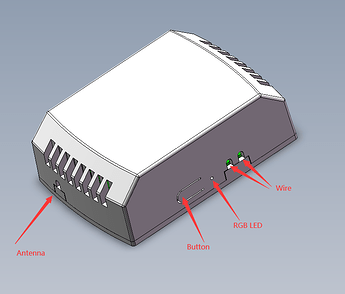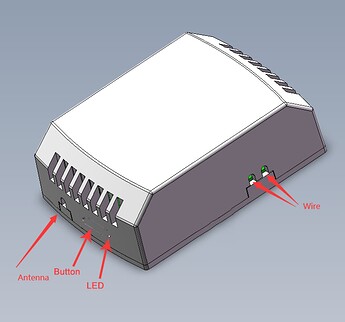Project Update: First iteration of the canopy module provided to us. Ahead of schedule.
I went back and asked for the button and LED to be placed in the front where the antenna is per my initial request.
In addition, I asked if the button could mimic our config button for consistency and the RGB LED could match our Gen 2 On/Off for consistency and their response was that we’d have to make the module bigger to accommodate for the config button as it needs more depth to depress than the design they proposed (not sure if you can tell from the picture, but the button is essentially flat against the depression pad). I figured we want this as small as possible, so every inch/cm counts.
As for the LED matching the On/Off switch, they came back with the ol’ we didn’t even quote you for the LED and added it in later per your request after your proposal for no additional fee, so if you want to make it custom, then it will incur a per unit cost increase and additional tooling, which I suppose was fair. So, we’re going to keep the design they proposed since no one is going to see the canopy module anyway. I just asked that they make the LED big enough for people to see it.
So, here’s my new mockup (haven’t gotten the final version yet, but this is what I anticipate it to look like:
Top/Side
NOTE: I know this looks large, but the dimensions are actually really small compared to the old module. Targeting the following dimensions (there may be some adjustment depending on what ETL comes back with): 2.1" W x 3.0" H x 1" D
Top

Bottom

–
Regarding the DC and Reverse compatibility, I still have a note out to them to provide feedback. I’m awaiting their response.
Anything I’m missing?

